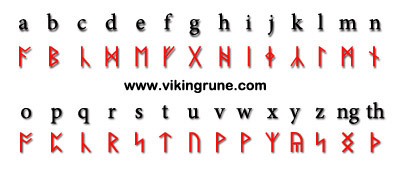

However, with small spelling differences and sometimes minor meaning changes, many of the most common words in Old and modern English are the same. VocabularyĪt first glance, Old English texts may look decidedly strange to a modern English speaker: many Old English words are no longer used in modern English, and the inflectional structure was far more rich than is true of its modern descendant. While the latter is not always relevant to the beginning student, it is nevertheless important to philologists and others interested in dialects and the evolution of the early English language. The nature of non-standardized Anglo-Saxon spelling does offer compensation: no letters were "silent" (i.e., all were pronounced), and phonetic spelling helps identify and track dialectal differences through time. A letter wynn was also added, to represent the English w sound, but it looks so much like thorn that modern transcriptions replace it with the more familiar 'w' to eliminate confusion. Another added letter was the ligature ash ( æ), used to represent the broad vowel sound now rendered by 'a' in, e.g., the word fast.

To help reduce confusion, we sort these letters indistinguishably, after T the reader should not infer any particular difference. We follow the practices of our sources in our textual transcriptions, but our dictionary forms tend to standardize on either þ or ð - mostly the latter, though it depends on the word. However, there was never a consistent distinction between them as their modern IPA equivalents might suggest: different instances of the same word might use þ in one place and ð in another.

In modern transcriptions such as ours, editors often add diacritics to signal vowel pronunciation, though seldom more than macrons (long marks).Īnglo-Saxon scribes added two consonants to the Latin alphabet to render the th sounds: first the runic thorn ( þ), and later eth ( ð). King Alfred did attempt to regularize spelling in the 9th century, but by the 11th century continued changes in pronunciation once again exerted their disruptive effects on spelling. Unfortunately, for the beginning student, spelling was never fully standardized: instead the alphabet, with continental values (sounds), was used by scribal monks to spell words "phonetically" with the result that each dialect, with its different sounds, was rendered differently - and inconsistently, over time, due to dialectal evolution and/or scribal differences. The alphabet used to write our Old English texts was adopted from Latin, which was introduced by Christian missionaries. For access to our online version of Bosworth and Toller's dictionary of Old English, see An Anglo-Saxon Dictionary. Upon the conquest of England by the Normans in 1066, numerous words came to be adopted from French and, subsequently, also from Latin.įor a reconstruction of the parent language of Old English, called Proto-Germanic, see Winfred Lehmann's book on this subject. In the course of time, Old English underwent various changes such as the loss of final syllables, which also led to simplification of the morphology. West Saxon was the language of Alfred the Great (871-901) and therefore achieved the greatest prominence accordingly, the chief Old English texts have survived in this dialect. Old English itself has three dialects: West Saxon, Kentish, and Anglian. The settlement regions correspond roughly to later dialect divisions of Old English. The early migrations of Germanic peoples from coastal regions of northern Europe to areas of modern-day England. The Germanic parent language of these three families, referred to as Proto-Germanic, is not attested but may be reconstructed from evidence within the families, such as provided by Old English texts. Old Icelandic) as its chief dialect, and East Germanic, with Gothic as its chief (and only attested) dialect. Sister families to West Germanic are North Germanic, with Old Norse (a.k.a. It is also referred to as Anglo-Saxon, a name given in contrast with the Old Saxon of the inhabitants of northern Germany these are two of the dialects of West Germanic, along with Old Frisian, Old Franconian, and Old High German. Old English is the language of the Germanic inhabitants of England, dated from the time of their settlement in the 5th century to the end of the 11th century. Cable, Professor Emeritus of the University of Texas at Austin.
#Old english word tor meaning series
Old English Online Series Introduction Jonathan Slocum and Winfred P. Linguistics Research Center Social Mediaįor comments and inquiries, or to report issues, please contact the Web Master at Menu.


 0 kommentar(er)
0 kommentar(er)
